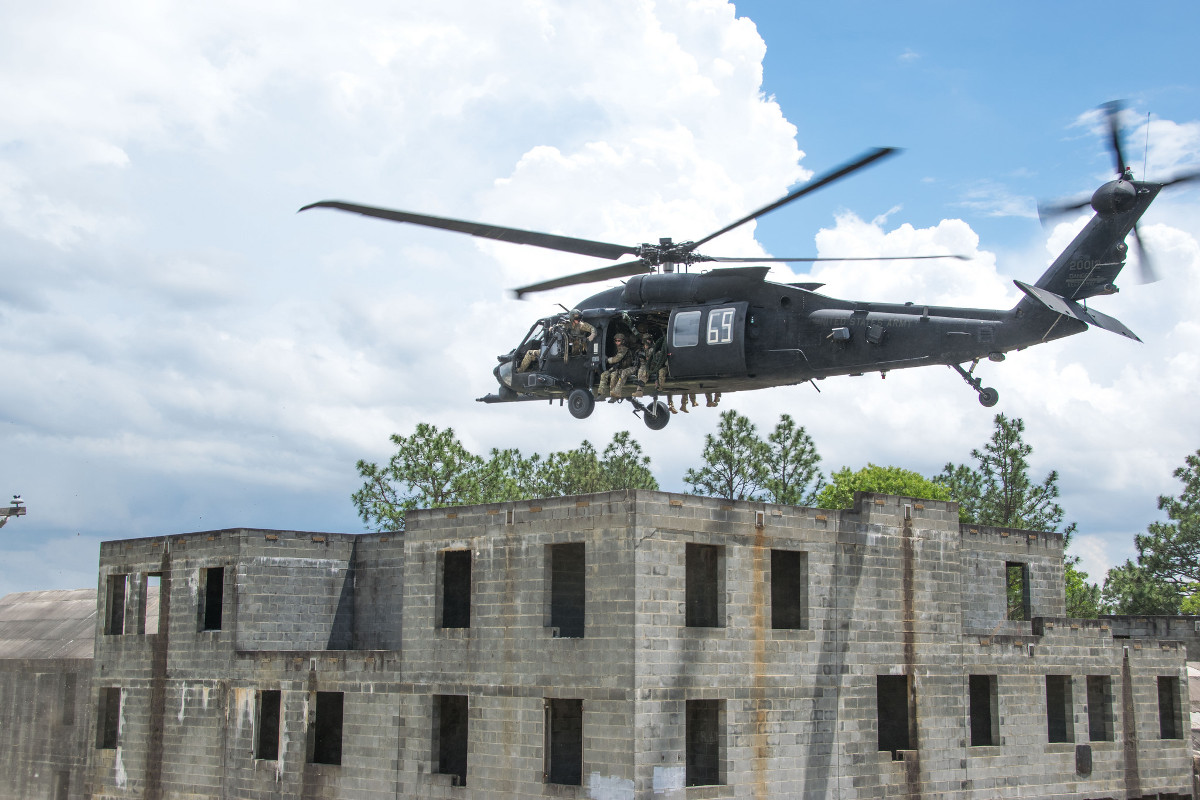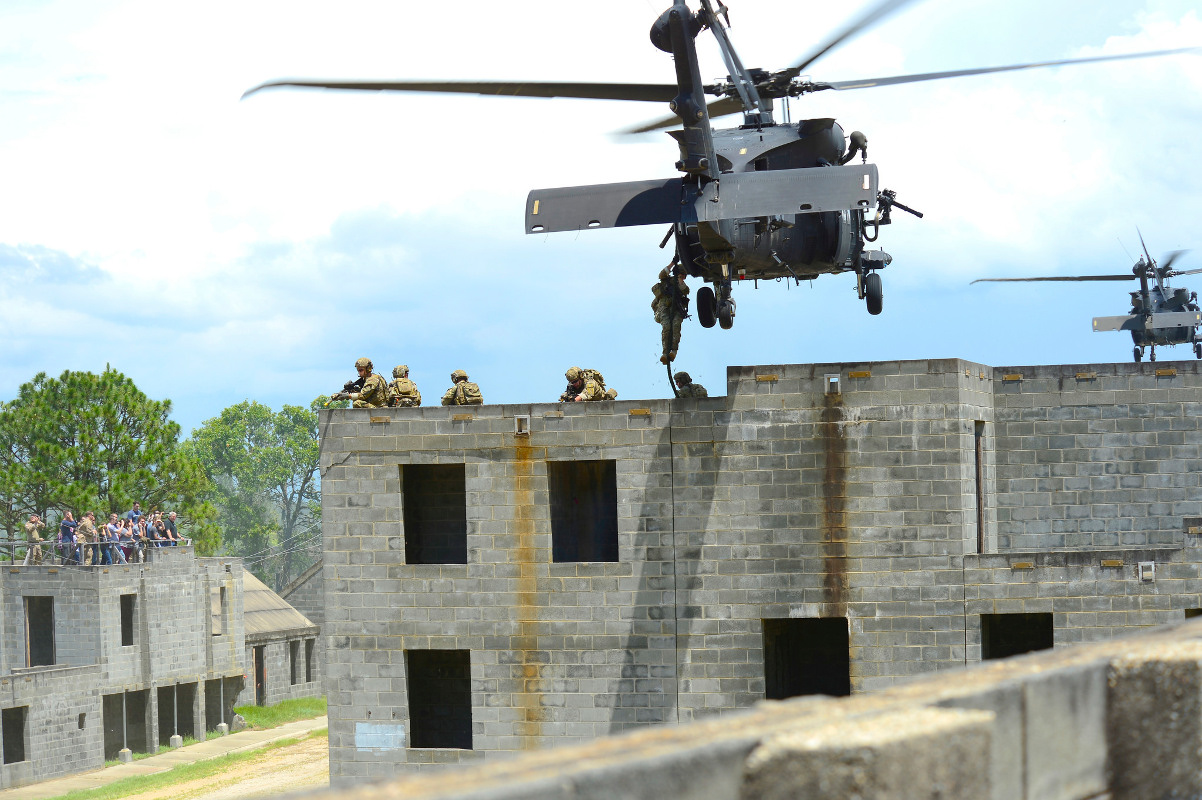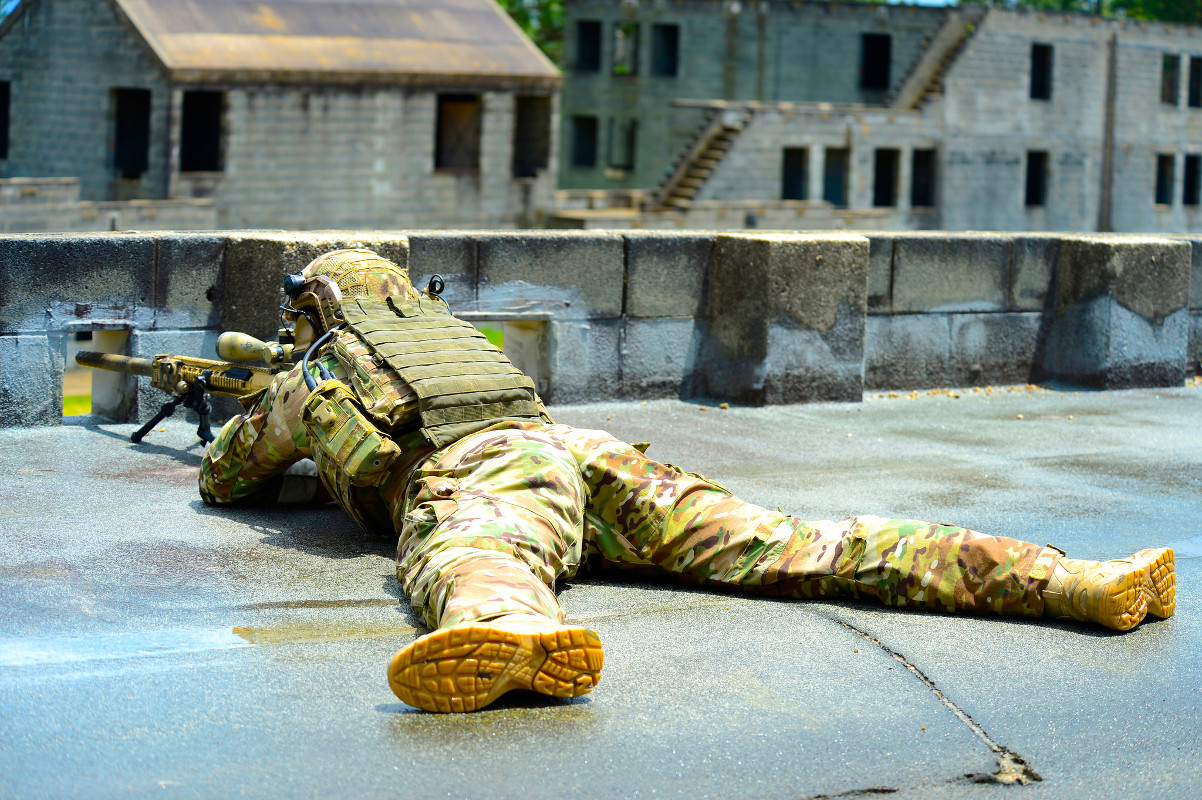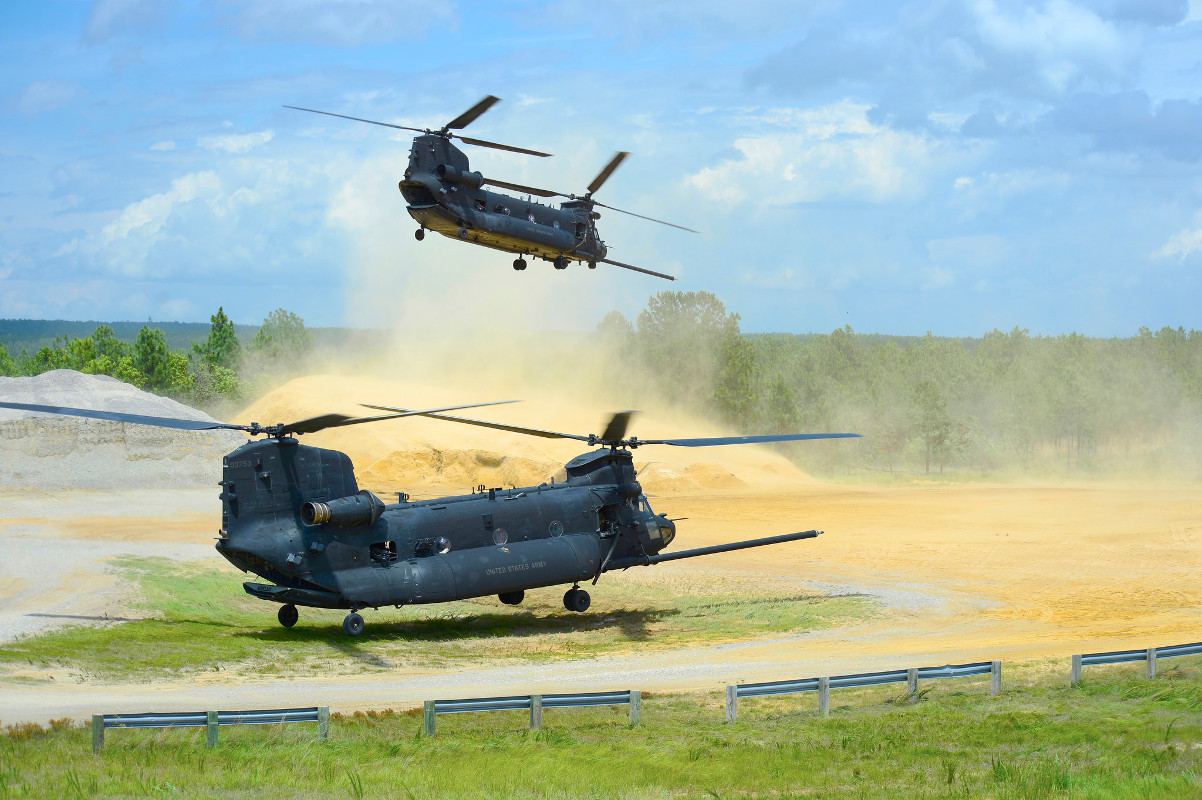It’s no secret that U.S. special operations forces regularly conduct a wide array of operations, including heli-borne raids into enemy-controlled towns or other well defended facilities. But America’s “silent professionals” are often called upon to perform these tasks discreetly, so it’s not every day the public gets to actually see the full force of such a mission, even in training.
Earlier in June 2017, the U.S. Army Special Operations Command invited a number of civilians from the surrounding community to come to Fort Bragg, North Carolina, the hub of the service’s special operations community, to watch some of the service’s elite forces run through a capabilities exercise, or CAPEX. Though American special operations forces put on these displays for various different groups, the events involving members of the public are an opportunity to engage with civilians and explain special operations missions, skill sets, and their value to the U.S. military. This particular demonstration included MH-60M Black Hawk and MH-47G Chinook helicopters from the 160th Special Operations Aviation Regiment (SOAR), nicknamed The Nightstalkers, inserting special operators during a mock air assault into a simulated urban area.
Army special operations aviation “training is one of the most rigorous, technical forms of training in the world,” an official manual from 2000 explains. “It produces some of the most professional and highly trained soldiers who demonstrate superior performance in small groups or as part of an integrated U.S. response with other military forces, as well as non- Department of Defense (DOD) and civilian agencies.”

The 160th in particular has a long and storied history since the Army first began forming the unique unit from existing aviation elements in 1981. Since then it has become well known for supporting daring raids and other critical operations during American military interventions in Grenada, Panama, the Persian Gulf region, the Balkans, Somalia, and more recently Iraq and Afghanistan. Most notably, Nightstalkers, likely working with even more shadowy aviation units, flew specially modified stealthy helicopters during the raid on a compound in Abbottabad, Pakistan that resulted in the death of Al Qaeda leader Osama Bin Laden.

The two MH-60s and three MH-47s on display during the demonstration at Fort Bragg may not be as advanced, but are still impressive. Operations in an urban training areacan be complicated and potentially hazardous, too.
Here is a video of a similar exercise that included cross training with Poland’s elite special operations forces:

In an urban area, “aircraft are at high risk from small arms fire, complicated by the proximity of noncombatants,” the old Army manual notes. “Blowing debris increases foreign object damage and can make landing areas unusable.”

The 160th’s MH-60Ms conduct many of the same duties as their regular Army counterparts, moving troops and supplies around, evacuating casualties, performing command and control functions, and even psychological warfare duties if necessary. But the pilots are expected to perform these tasks under much more demanding circumstances, almost exclusively at night during actual operations, and often far removed from traditional logistics pipelines.

As such, these specialized Black Hawks have terrain-following radars to aid with blacked-out, low-level flying, day and infrared full motion cameras, enhanced communications systems, advanced warning sensors and defensive countermeasures, as well as the ability to refuel in mid-air. The basic MH-60M configuration carries two M134 miniguns for self-defense, but a so-called Direct Action Penetrator (DAP) setup adds stub wings and other fire control equipment, turning the helicopters into gunships armed with missiles, unguided rockets, or forward-firing machine guns or automatic cannons.

The MH-47Gs have many similar modifications, including the same terrain following radar, and feature larger fuel tanks compared to the standard Army CH-47Fs, giving them a more portly appearance. The long in-flight refueling probe and the hoist at the front main cabin door are other dead giveaways of the special operations variant. Instead of the three M240H 7.62mm machine guns on basic F models – two near the front and one on the helicopter’s rear ramp – the G variant has two M134 miniguns in the forward, side-firing positions, as well as two M240s mounted in the main cabin’s rear emergency exit windows.

Given their payload capacity and range, with the ability to carry around 40 troops depending on various environmental factors, the special operations Chinooks often play a supporting role during operations, rushing quick reaction forces to a target area or arriving later on to extract special operations forces, along with prisoners, hostages, or other precious cargo. They also work as tankers for forward refueling points, allowing shorter-ranged assets to land at a remote location, take of fuel from the Chinooks and then get back into the action, or safely back to base. 160th Chinooks were used in this role during the Bin Laden raid.

During the 2017 CAPEX, the two MH-60M, miniguns blazing, deposited teams onto the roofs of buildings, as additional elite troops moved in on the ground. The three MH-47s landed in a nearby field, ready to pick up the entire force.

The U.S. Army expects to fly these helicopters for the foreseeable future, but continually upgrade them to increase their capabilities, including work to increase range, fuel efficiency, payload capacity, and survivability. A plan is underway to eventually add a “degraded visual environments” equipment to both helicopters, which would help aviators see through dust clouds, swirling sand, smoke, and other similar hazards.

By 2030, the service’s goal is to be close to fielding an all-new family of aircraft, which could be either advanced helicopters or tilt-rotors, to replace existing choppers or all types across regular and special operations units. In the meantime, CAPEX will continue to feature the 160th and its existing fleet of iconic black helicopters.

Contact the author: joe@thedrive.com
